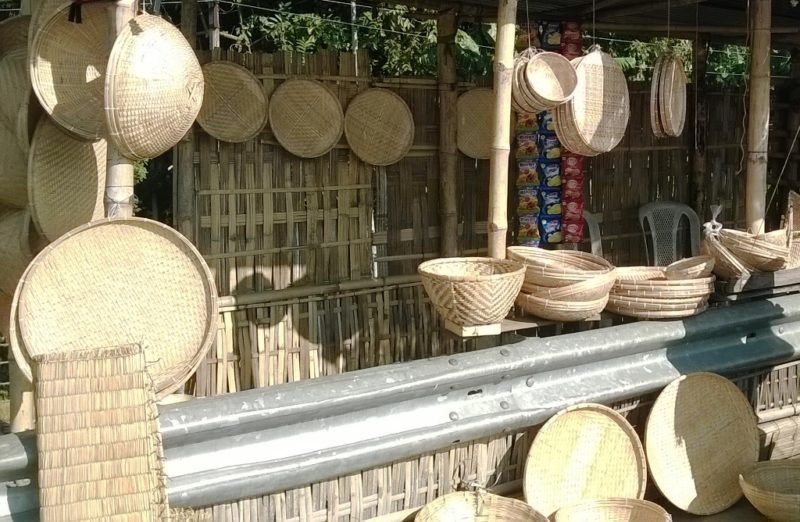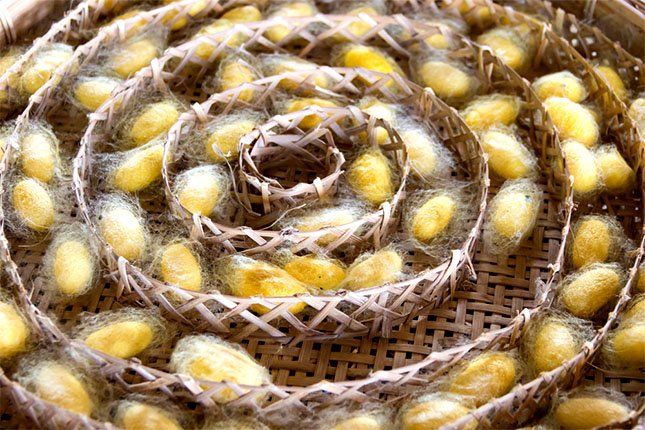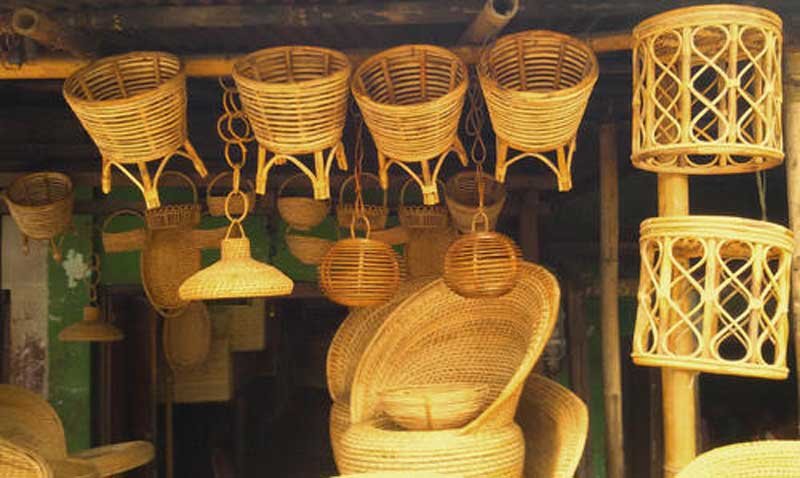Seizing SDGs through Assam’s Indigenous Industries

The 2030 Agenda for Sustainable Development, as published by the UNDP, recognizes that virtuous work is both a means and an end to achieve sustainable development by eradicating poverty, limiting the climate emergency and to uplift communities across the globe. With the world inert due to the ongoing pandemic and global financial crisis, policymakers have resorted to a relief package for the MSME sector, which in turn, will also re-energize the indigenous industries of the country. With 8% contribution to the GDP, this sector creates large scale employment, requires less investment and leverages exports.
Boasting of arresting mountainous scenery, streams falls and rivers, unique natural resources featuring nonchalant melancholy with the tribal inhabitants being nature worshippers, the North-Eastern region remains one of the least visited but fastest developing parts of India.
Assam popularly called the Gateway to North-East India has the highest number of MSMEs estimated at 662,000, housing numerous indigenous industries. Here, we delve deeper into the two indigenous Industries of the State viz Handloom and Cane Industries- to understand the history, the operations and the plights faced by them.

The Ageless Handloom Industry
India is the second-largest Silk producer in the world. Contributing to 60.5% of the total handloom household, the provenance of this industry is concentrated in the North Eastern States. Assam alone accounts for 44.6% of it and is primarily based on sericulture. Handloom weaving has an overwhelming presence in the socio-economic scenario of Assam since time immemorial and it is one of the largest economic activities after agriculture in India. The salubrious weather condition of the region makes it favourable for silk rearing. Amongst the different silks viz Eri, Tasar & Pat, the most prestigious and glamorous Muga Silk has its roots in the small weaving town of Sualkuchi situated in the Brahmaputra Valley, also known as the Manchester of the East.

The history of weaving dates back to the Ahom regime where they supervised and organized it as a cottage industry primarily for producing silk clothes for the “Rojaghoria” (Royal Family). Momai Tamuli Barbaruah, minister to the King Pratap Singh (1603-1641) made it an obligation for every household in the kingdom to spin and weave, making it a popular and engaging means of subsistence. As in the former times, this industry employs women as 60% of its workforce as its operation requires soft skills in designing and manual work passed down from the previous generation, making them self reliant.
The labour is not engaged in weaving 365 days of the year; when harvesting season gets over, men too takeover in the process for a brief period. The set up of handloom doesn’t require space or heavy monetary investment adding to the advantage of the poor weavers. Despite the economic implications, the sector lends itself to the sustainable development policies aimed at reduction of negative ecological impact – producing little to no waste, no requirement for fuel or transportation cost as it can be set up in the homes.
Even though, as per the Central Silk Board report in 2011-12, State production of Silk has increased to 2,109 tonnes, next only to Andhra Pradesh (6,019 tonnes), this sector is largely unorganized and subjected to exploitation by middlemen sellers. The Ministry of Textiles, Govt. of Assam has taken an initiative to promote the “Silk Mark” to differentiate pure and fake silk. Schemes launched by the Govt. like the modernization of looms, creation of commercial motivation, an extension of training facilities, development of textile designs, etc. have been quite commendable.
However, as most of the output is limited to the production of traditional Assamese attire, the industry faces tremendous competition from the radical shift in demand towards machine-made westernized clothes and cheap Chinese silks. The foremost requirement would be to form cooperatives for weavers to mobilize limited resources and collective action to befit them in the Indian and Global markets. Adequate training programs with foreign institutions and MNCs to update contemporary design preferences in a globalized world and opportunities to develop entrepreneurship amongst the weavers can open newer avenues for export and increased revenue.

CANE and BAMBOO Industries
With the Global Climate Emergency, it has become imperative for both Developed and Developing Nations to formulate solutions and find alternatives to attain the SDGs and one such substitute to ecologically-degrading materials is Bamboo.
Bamboo is a very tall, fast-growing perennial grass. They are not only strong but light-weight as well. Blessed with rich forests stocked with bamboo, species like MULI (Melocanna bambusoides), DALU (Teinostachyum dalloa), PECHA(Dendrocalamus Hamiltonii) are native to Assam. The Muli and Dalu are of great commercial importance; the former for pulping, piping, constructional and fencing purposes, and the latter for bending into handicrafts. Products made from bamboo are a part of Assam’s handicraft industry since ancient times which can be traced back to the 2nd century AD but there are no exact records to know the history and genesis of the craft in Assam.
Also, the natives with their excellent craftsmanship, have learnt to use this gift of nature and produce items like ‘FULAM JAPI’ (traditional headgear), ‘SITAL PATI’ (cool mat), ‘CHALANI’ ( traditional sieve), ‘DALA’ (bamboo tray), ‘TUKURI’ (big basket), ‘MURRAH’ (Bamboo stool) that has successfully earned the recognition in the global market. Furthermore, since this industry requires no mechanical device, it is practised as a cottage industry- employing not only skilled artisans but also help cultivators to engage as part-time employees in their spare time providing a dependable source of income.
Even though these products have high demand and require little or no investment, they are not able to occupy the market. Even with their comfort and aesthetic appeal, there are considerable scopes for development of this industry. Lack of market intelligence, negligence by the government to popularise the products, foul play by middlemen; all add up to the woes of poor farmers. Also, to sustain this artwork, craftsmen should try their hands with new designs and try to encourage youth to take this up as a part of their rich culture.

Conclusion
The Indian economy has witnessed multidimensional changes over time and seen fast – track changes. But of all, one thing that has completely changed the scenario of the Indian Economy is the new economic policy of 1991. It not only made the economy welcome international competition but also made Indian producers self-reliant. As a result of the reform, it divided people into groups – one who praises and opines that the reform would bring progress in every field and every sector, whereas another group that vehemently opposes the reform due to the ill-effect in different sectors.
Adding to the virtues of these MSMEs, we can draw a parallel with the Sustainable Development Goals to it. The formulation of the 17 SDGs is an alarm call for global partnership between both developing & developed nations to negotiate, take actions and mitigate common global phenomena. Cottage Industries like Handloom and Bamboo Industries have recognized the means to end poverty, gender inequality and spur economic growth- all while providing a sustainable source of livelihood to indigenous communities of the region. They have also emerged out as an alternative to tackle the problem of climate change by ensuring resource efficiency and reducing waste.
Now, in this era of laissez-faire market system, the Indian Handicraft market also had to face the bittersweet consequences of the open-market. With positive traits viz. rapid growth of export and upsurge in earning capacity. The biggest concern is, can the ‘local’ really meet the ‘global’ by truly sustaining its localness. Moreover, the village craftsmen remain concerned that with free-trade and mass production, hand-made products from other parts of the world will outprice the products of their hard labour. Thus, in this time of free-market, the shadow of globalisation looms large and with inadequate marketing and export promotion, our craftsmen have not been able to reap the economic gain from globalisation and keep its image alive in the global market.


















